The Ashford Affair Blog Tour
 I shall now interrupt our regularly scheduled programming (ie, Golden Summer) for a very special reason. Today I am the blog stop for the official virtual Lauren Willig tour (be sure to check out the rest of the stops too). That is correct, gentle readers, a blog tour for that most wonderful of books, The Ashford Affair. As you may recall, I spent April devoting my blog to Lauren Willig's first stand alone novel, The Ashford Affair, which I gather you all liked seeing as my blog analytics tell me that it was my second highest ever for hits in a single month. Personally, I know exactly why, Lauren is awesome. Also, it makes sense to have a little Lauren oasis during my Golden Summer... it was because of reading The Ashford Affair that I got on my 1920s kick, first with Mitfords then with mysteries, and eventually I ended up devoting the summer to 1920s whodunits. A nice progression of events and reading I must say. But let me tarry no longer, I reached out to you, my readers and asked what do you want to know from Lauren. Of course I slipped in one or two of my own questions, but I couldn't help it. Without further ado, I bring you Lauren.
I shall now interrupt our regularly scheduled programming (ie, Golden Summer) for a very special reason. Today I am the blog stop for the official virtual Lauren Willig tour (be sure to check out the rest of the stops too). That is correct, gentle readers, a blog tour for that most wonderful of books, The Ashford Affair. As you may recall, I spent April devoting my blog to Lauren Willig's first stand alone novel, The Ashford Affair, which I gather you all liked seeing as my blog analytics tell me that it was my second highest ever for hits in a single month. Personally, I know exactly why, Lauren is awesome. Also, it makes sense to have a little Lauren oasis during my Golden Summer... it was because of reading The Ashford Affair that I got on my 1920s kick, first with Mitfords then with mysteries, and eventually I ended up devoting the summer to 1920s whodunits. A nice progression of events and reading I must say. But let me tarry no longer, I reached out to you, my readers and asked what do you want to know from Lauren. Of course I slipped in one or two of my own questions, but I couldn't help it. Without further ado, I bring you Lauren.
 Question: Seeing as The Ashford Affair is set in Kenya during the ‘Happy Valley’ days, if you were to have a dinner party with the Happy Valley Set, who would you invite? Might you leave Isak Dinesen off the guest list?
Question: Seeing as The Ashford Affair is set in Kenya during the ‘Happy Valley’ days, if you were to have a dinner party with the Happy Valley Set, who would you invite? Might you leave Isak Dinesen off the guest list?
Answer: Yes, let’s leave Isak Dinesen at home! After reading up on that crowd, you do get the impression that she wasn’t quite the sympathetic character she was made out to be in the movie version of Out of Africa (although she did have some provocation). You get the sense that when people heard she was on her way, there was a muttered, “Quick, Karin’s coming—out the back door!”
Bror Blixen’s second wife, Cockie, on the other hand, sounds like she’d be fun to have around. We’d have to have Beryl Markham and Denys Finch-Hatton, of course: adventurers with stories to tell. And no Happy Valley party would be complete without Idina and Joss Hay, who, for all their hedonism, were both well-read, charismatic characters.
I’d leave out Alice and Frederic de Janze, though—he’d probably write a depressing book about it, and she might shoot someone.
 Question: It seems that every person who settled in Kenya had a need to write a book, from Dinesen to Markham. What do you make of this phenomena?
Question: It seems that every person who settled in Kenya had a need to write a book, from Dinesen to Markham. What do you make of this phenomena?
Answer: Personally, I’m rather grateful for it, since it made my research much easier! It’s a skewed data set, though. When you look at the number of settlers who made their way to Kenya, the memoir writers were actually a fairly small percentage. In fact, that was one complaint that popped up as I was researching the period: that the flamboyant Happy Valley types overshadowed the fact that the bulk of the settlers in the region were hardworking farmers who kept their heads down and their farms running. For every Idina Sackville or Bror Blixen, there were a lot of people just minding their plows, but the gang who boozed it up at the Muthaiga Club left a disproportionately large footprint.
One thing I do find particularly interesting is the tilt, not just towards memoir-writing, but towards fictionalized memoir writing. One of my favorite sources, as I was reading up on the area, was Elspeth Huxley’s Flame Trees of Thika. It’s part memoir, part make believe, just like Isak Dinesen’s Out of Africa, the real and the fictional woven together in the guise of truth. In terms of physical details of life in Kenya, these books were gold mines, but I think there’s also something very telling in the fact that the line between fact and fiction in the narrative structure gets blurred. It goes to your next question, below, about the mystical lure of Kenya. Those settlers we’ve been talking about built a self-consciously mythologized image of the region and of their own place in it.
 Question: What do you think is the mystical lure of Kenya? From English settlers back in the day to books set there, and even television shows like In the Heat of the Sun, what is the obsession with Kenya?
Question: What do you think is the mystical lure of Kenya? From English settlers back in the day to books set there, and even television shows like In the Heat of the Sun, what is the obsession with Kenya?
Answer: For the segment of English expats I was writing about, a lot of it had to do with escape and an attempt to rebuild or reclaim a romanticized version of their own past. The Great War had just torn through all levels of society and the old aristocracy was watching their estates become forfeit to death duties and rising costs. In 1919, the British government held a land lottery for plots of land in Kenya (then British East Africa). Larger plots could be purchased for relatively small sums. To the old Etonians who flocked to Kenya, Kenya was both a way to escape the horrors they had seen back in the old world and to rebuild their fortunes.
Some were straight out fortune hunters, hoping to make a killing in coffee or indigo (which generally worked out badly for them), but many harbored a romanticized vision of Africa as somehow untouched and unspoiled, a demi-Eden where a pre-war past could be recreated. That aspect comes out very clearly in their writings—there’s a lot of explicit comparison between the local tribes and medieval feudal societies—and also in their naming of their homes. Joss Hay, the Earl of Errol, one of the key members of the Happy Valley set, calls his plantation Slains: the name of the castle in Scotland his family had lost.
 Question: Did your love of coffee make a book set on a coffee plantation inevitable?
Question: Did your love of coffee make a book set on a coffee plantation inevitable?
Answer: It had less to do with my being a caffeine junkie and more to do with formative years spent watching the Britcom As Time Goes By. As I was writing Ashford, it was a running family joke that I should just call it My Life in Kenya, a la Lionel’s memoir.
Question: You have mentioned that a fair bit of The Ashford Affair set in Kenya was sadly a victim of edits, might we loyal readers someday see these pages as an extra on your blog?
Answer: In the past, I’ve rescued snippets of my Pink Carnation books from the cutting room floor, but those bits were small and discrete scenes. The cuts in Ashford were much more extensive—about a hundred pages set in Kenya in the late 20s and 30s. When I cut those segments, I reworked the rest of the novel to make up for those gaps. I felt like those chapters made sense in their original context in the novel, but they don’t stand on their own as fun little anecdotes, the way the Pink outtakes do. Those deleted chapters also make explicit incidents that, in the reworked version, are deliberately left ambiguous. So, the short answer is, probably not—although I might revisit those chapters at some point and see if there’s anything that can be salvaged for the outtakes section.
I will say that writing Ashford made me nostalgic for the doorstop novels of the 80s, when an author could safely write a thousand page tome. The original plan for Ashford involved a triple narrative—Clemmie, Addie, and Bea—in which we would follow both Addie’s and Bea’s threads right up through World War II. But the fashion right now is for leaner books, so the more ambitious and all-encompassing narrative had to be abandoned.
 Question: Ancestry and our roots seem to be a big craze right now, what do you think it is that makes books revolving around family secrets so irresistible?
Question: Ancestry and our roots seem to be a big craze right now, what do you think it is that makes books revolving around family secrets so irresistible?
Answer: My instinct is that it has something to do with the present being so uncertain. We live in uneasy times. The economy is shot, our sense of opportunity has been shaken; people are facing the prospect of rocky futures and straitened retirements. In those circumstances, there’s something very reassuring to turning to the past, to seeing what our grandparents or great-grandparents managed to struggle through and triumph. When you think of it, the last big era of the family saga and intertwined present/past narratives (Barbara Taylor, Judith Krantz, and so on) was back in the 70s and early 80s, which was another era of economic uncertainty and murky prospects. I think reading these books, especially the ones in which characters manage to fight their way from adversity to prosperity (or, in many cases, from prosperity, through a fall to poverty, and back to prosperity again) provides a sense of encouragement and hope, and that we as readers—in a parallel journey with the modern characters in the books—draw strength and a deeper understanding of our capabilities through comparison with the past.
Question: Now that you have successfully broken the limitations of writing just the Pink Carnation Series, what other stand alones do you see in your future?
Answer: I have another modern/historical hybrid (I’ve been told the au courant term is “time slip”) coming out next year, but since you ask about that below, I’ll skip the thumbnail sketch here.
As to what comes after that, there are three potential plots I’m playing with right now, all, surprisingly, twentieth century: one 1920s, one 1930s, one 1940s. I’m not quite sure which of these plot ideas is going to win out (each has its own particular allure), but, if I have my way, the next stand alone will be purely historical, with no modern component. As much as I’ve enjoyed writing the dual narratives in Ashford and the Victorian Book (aka stand alone #2), my real interest lies in the historical side, and that’s where I’d like to head next.
 Question: Can you tell us more about the Victorian ‘Work in Progress’? (Miss Eliza added note, and have you finally watched Desperate Romantics, the Entourage of Victorian England?)
Question: Can you tell us more about the Victorian ‘Work in Progress’? (Miss Eliza added note, and have you finally watched Desperate Romantics, the Entourage of Victorian England?)
Answer: I have a weakness for what I think of as “house” books. I love books where the heroine inherits—or rents, or house-sits, or otherwise occupies—an old house, the dingier and more history crammed the better. If she can find some sort of mysterious artifact leading to a secret hidden in the house’s past, so much the better. (I blame this on a youth spent devouring Barbara Michaels novels.)
I also have a weakness for the Preraphaelite painters, for their lush compositions, their fascination with mythology, and their brash idealism.
The Victorian Book is a house book with a lost Preraphaelite painting. Basically, it’s my equivalent of chocolate with chocolate in it.
 (Note to Miss Eliza: Nope, I still haven’t watched Desperate Romantics—I want to wait until the manuscript is all tied up and copyedited before I watch the show, so I can be sure that I’m not unconsciously letting it influence my portrayal of the painters. I’ve heard that it’s great fun, but not the most accurate.)
(Note to Miss Eliza: Nope, I still haven’t watched Desperate Romantics—I want to wait until the manuscript is all tied up and copyedited before I watch the show, so I can be sure that I’m not unconsciously letting it influence my portrayal of the painters. I’ve heard that it’s great fun, but not the most accurate.)
Anyway, here’s the thumbnail synopsis of the Victorian Book: it’s 2009 and my modern heroine, a financial analyst, has lost her job in the downturn. She inherits a house from an unknown great aunt in a suburb of London and goes out there to sort it out, with plans to sell. In the clean out process, she discovers not only some rather suspicious cousins and a disturbingly cute antiques shop owner, but also a Preraphaelite painting wrapped in crumbling paper, hidden behind the false back of a wardrobe. Her quest for the painting’s history takes up back to 1849, to the early days of the Preraphaelite movement and the tangled lives of the people who lived in the house back then.
For my Pink readers: the disturbingly cute antiques shop owner is one Nicholas Dorrington. Yes, that Dorrington. I snuck in a descendant of Miles and Henrietta as my (modern) leading man….
Question: Is Dare Me still a possible project?
Answer: Poor Dare Me. A contemporary romance novel that I started writing just for fun two summers ago, Dare Me has been a casualty of my souped-up publication schedule. (For those of you who haven’t seen it, you can find the first six chapters here.
Right now, I’m on a tight, two book a year schedule, which means that projects for which I’m not currently under contract fall by the wayside. That being said, I’m hopeful that I can find some time to work on Dare Me once the eleventh Pink book is safely in to my editor this fall. Now I just need to speed up my work on that Pink book….
Question: Do you usually have a couple in mind and an ending and then build the in-between parts or does the story unfold along the way and do you ever find yourself surprised by where your characters have taken you?
Answer: It varies book by book. Sometimes, I’m caught by a character and just need to follow that character and see where she—or he—goes. That was definitely the case with Miss Gwen in The Passion of the Purple Plumeria. In writing her book, I was primarily interested in seeing how her character unfolded and developed over the course of events. Other times, it will be a quirky historical incident I just need to use (like the underground Irish resistance managing to blow up their own headquarters in The Deception of the Emerald Ring), or a “what if” scenario, such as “what if a modern woman were to discover that nothing about her family was as it seemed?”
For the most part, though, I’d say I’m a character driven writer, which is why my books tend towards the latter scenario you mentioned: I’m constantly surprised by where my characters take me. I’ve learned that I’m best off being flexible and revising my plot plans as the story goes along, since the characters often develop in ways I would never have imagined. It can be nerve-wracking—I never know quite what’s going to happen, which is pretty scary when you’re only a few chapters in and a deadline is looming—but also keeps the writing fresh and exciting.
 Question: Which book was the most fun to write and research?
Question: Which book was the most fun to write and research?
Answer: That would be two different books. The most fun to research? Absolutely The Betrayal of the Blood Lily. I loved learning about the tangled intrigues of the court of the Nizam of Hyderabad in 1804. With a mad ruler, a semi-insane vizier, an all female platoon of soldiers, and wet-nurses turned master of ceremonies, so much of what I was reading fell into my favorite category: when truth is stranger than fiction. And that’s just the tip of the iceberg.
As for the most fun to write…. It would be a toss-up between The Masque of the Black Tulip and The Mischief of the Mistletoe, both of which had more than their fair share of madcap comedy.
Question: Now that the Pink Carnation series is winding down to an extent, do you plan to write more Pink novellas to bring back old characters?
Answer: There are still at least two books to go in the Pink series, Pink XI and Pink XII, so we’re not quite wound up yet. (Pink XI is Sally Fitzhugh’s book, slated to come out in August 2014. Unless something changes, Pink XII should be Jane’s book, presumably 2015, but I don’t have any hard and fast news about that yet.)
I’d love to revisit the older Pink characters with more novellas, but it all depends on timing. Now that I’m on the doubled up writing schedule, there is, sadly, less time to write just-for-fun novellas. On the plus side, it does mean two books a year rather than one; on the down side, fewer extraneous extras.
 Question: *Note: stealing this one from Tracy Grant's interview of Deanna Raybourn on her blog: What four book characters (other authors, not yours) would you invite over for dinner and why?
Question: *Note: stealing this one from Tracy Grant's interview of Deanna Raybourn on her blog: What four book characters (other authors, not yours) would you invite over for dinner and why?
Answer: Lord Peter Wimsey, for his ability to speak glorious nonsense; Elizabeth Peters’s Jacqueline Kirby (as a librarian, she’d have some excellent book recommendations); Jane Austen’s Emma, for all that gossip; and Mr. Rochester, because he smolders so nicely.
Ask me again tomorrow, and you’d probably get a different batch….
 Question: What book by another author are you in love with right now?
Question: What book by another author are you in love with right now?
Can I cheat and name multiple books?
Satisfying the gothic craving in me, I am deeply in love with Simone St. James’s two 1920s-set ghost stories, The Haunting of Maddy Clare and An Inquiry into Love and Death. I love ghost stories and these are particularly well done, just the right sort of prickles on the back of the neck with the Dorothy Sayers-esque 1920s tone.
Moving from windy nights to sunny beaches, the other book I’m in love with right now is Beatriz Williams’s A Hundred Summers, set in an upscale beach enclave in the 1930s as a young woman struggles to deal with her former fiance’s reappearance—as the husband of her former best friend. (Lily and Budgie in A Hundred Summers have a great deal in common with Addie and Bea in Ashford!)
Thanks so much for having me back here, Miss Eliza! It’s always a joy to visit Strange and Random Happenstance.
























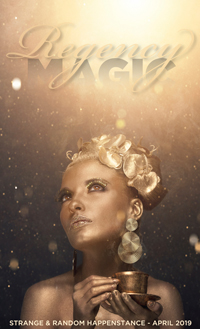
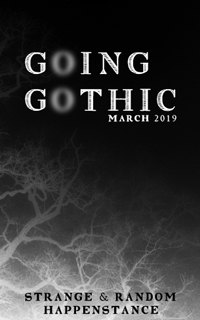
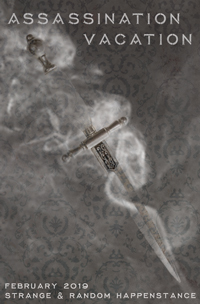
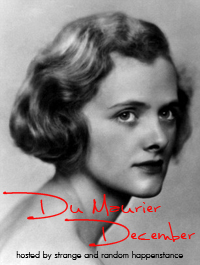
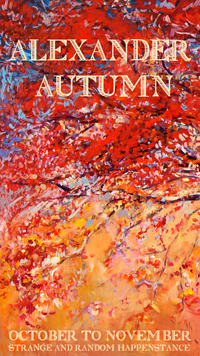
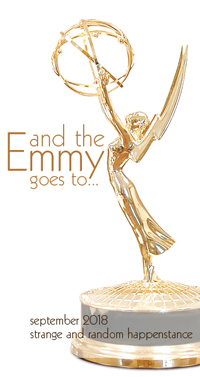

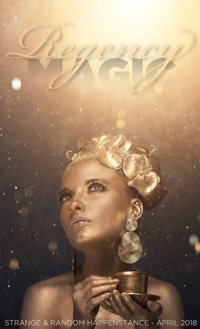


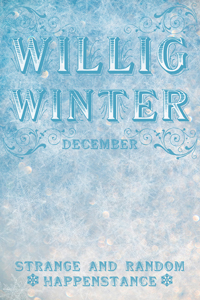

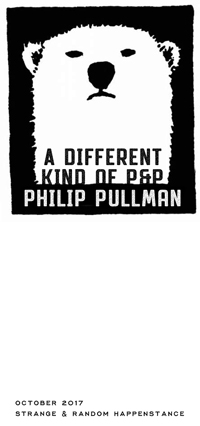


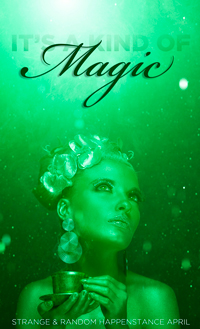
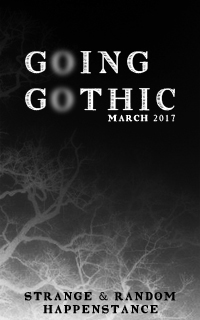

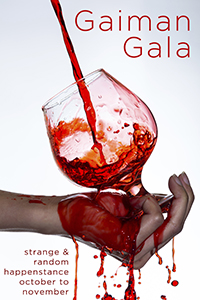
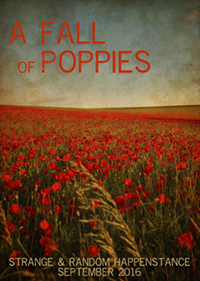

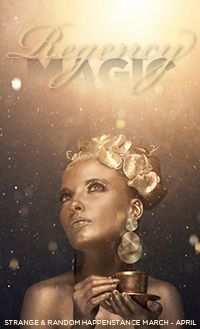

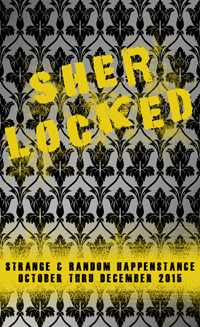
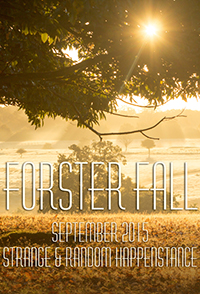
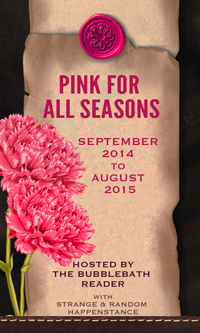
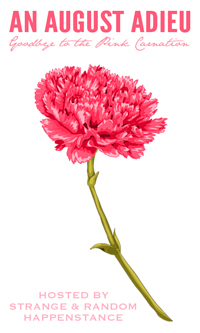

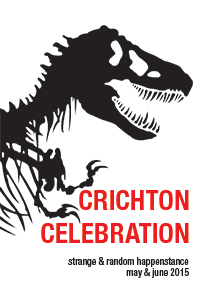


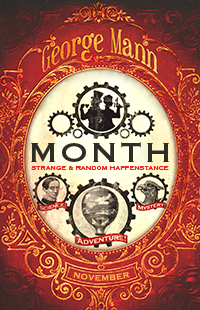

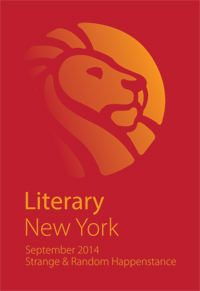
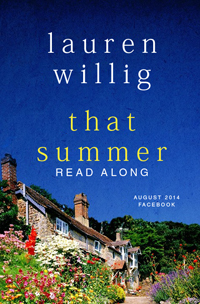


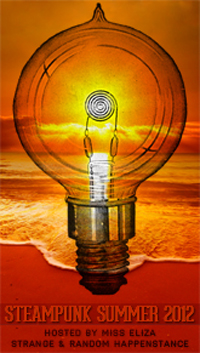
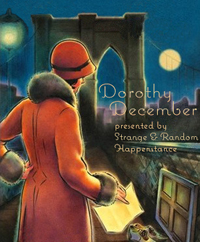























What a great interview! So fun to find out more about the background of Ashford. I have to say I would love to see those cut scenes, though I can see how it would be hard to take them out of context.
And I love that you picked up on my question to Deanna - which in turn was inspired by a question Deanna asked me!
Tracy Grant said... July 7, 2013 at 5:41 PM
I have my blog follower Ashley for the Deanna question! I too just love finding out more of the background of books I love!
Miss Eliza said... July 7, 2013 at 6:28 PM
What a great interview, Eliza! Thanks for asking my questions :) I'm so excited for the Victorian novel!
Ashley said... July 8, 2013 at 7:43 AM
Post a Comment